Drivers now worried about blistered tires at these 218 mph speeds; NASCAR late Friday night orders LS tire change for 400, and special practice session Saturday night
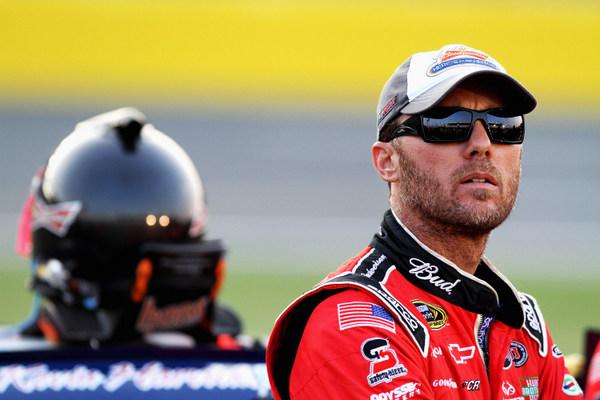
Kevin Harvick: blistering tires? Now what to do? (Photo: Getty Images for NASCAR)
(Updated/Developing/New tires coming)
By Mike Mulhern
mikemulhern.net
BROOKLYN, Mich.
An unexpected rash of blistered tires has Sprint Cup crew chiefs suddenly worried about Sunday's Michigan 400, and wondering how to deal with this new lightning fast two-miles of fresh asphalt, and the 218 mph straightaway speeds.
Late Friday night John Darby, the NASCAR Sprint Cup tour director, sent out a terse technical bulletin to teams:
-- There will be a crew chiefs meeting at 1030 am ET Saturday at the track.
-- There will be a new left-side tire for Sunday's Michigan 400.
-- Qualifying (at 1 pm ET) will be held with the current left-side/right-side tires.
-- A special practice session will be held Saturday night from 6 pm ET for 75 minutes with the new tires.
No further details were immediately available. NASCAR officals offered no comment. There is no indication about what left-side tires might now be used.
Here's the latest: http://bit.ly/LbngFb (as of 10:15 p.m. ET Friday evening). [cut and paste the bit.ly in your browser address.]
"With the new repave here at Michigan, coupled with the high temperatures we’re seeing this weekend, we feel this changewill help us put on the best race possible on Sunday," Robin Pemberton, NASCAR Vice President of Competition, said.
This is the earlier report, before word broke of the changes:
Crews began noticing the problem on their left-side tires Thursday afternoon when the ambient temperature rose to the 80s.
Goodyear, in response, Friday morning released all its tires to the stock car teams, something it doesn't normally do until race day, and Goodyear and NASCAR are allowing teams to 'scuff' their tires to harden them.
Whether scuffing tires – a standard tire move in such situations – will resolve or ameliorate this issue is unclear.
Such tire problems were once expected on repaved tracks, because new asphalt is so sticky. However over the past five to seven years Goodyear has become expert at dealing with track repaves, and such tire issues as now seen here have rarely been an issue.
In fact just last week at Pocono, the extremely fast new asphalt there, where teams hit 215 mph on the frontstretch, and the new Goodyears worked very well. Teams reported no significant problems.
Here, however, the prospect of blistered tires is suddenly quite real and extremely worrisome.
And there appears to be no real good solution, either for Goodyear or NASCAR or the teams.
Kevin Harvick says one answer for drivers is 'tire management,' which is a euphemism for slowing down and not running hard, in order to save your tires.
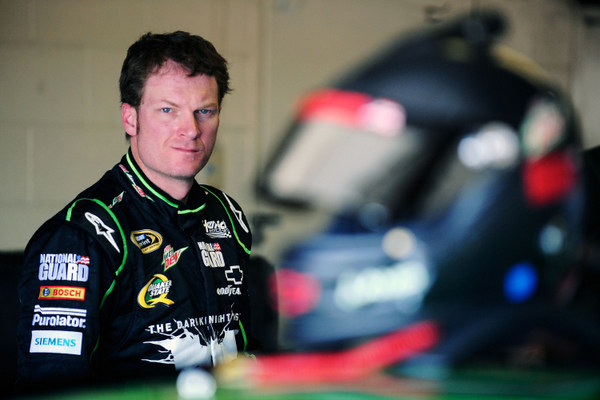
It's been exactly four years since Dale Earnhardt Jr.'s last Sprint Cup tour victory....but with these 220 mph speeds and blistered tires, he's got more on his mind at the moment (Photo: Getty Images for NASCAR)
It appears that left front tires are starting to blister after 10 or 15 or 20 laps, because that particular tire (new, and different from the right-side tire, which is the Talladega tire) seems to be too hard or too tough to shed rubber to shed heat.
Drivers appeared to have no problems early Thursday, when the track was cooler and had more grip; the trouble appeared to begin when the weather got hotter and the track picked up rubber and drivers started skating around a bit more.
Paul Menard's crew chief, Slugger Labbe, says this is the situation:
"Thursday morning when the track was cooler, we didn't see that problem, and we could run 40 laps (80 miles) on a set and we had no problem.
"But when the track hot and slick and rubbered up, the cars started sliding around, the speeds were still up (actually a bit faster), and we saw the issue. The cars sliding around creates heat, friction, and the temperatures (tire temperatures) shot up a lot.
"The tires are so hard we know they're not going to shed rubber. And when they don't wear out, they create heat.
"When the track gets hot, the cars dance around, and when they dance around, they create heat and blister.
"The Nationwide cars don't have that problem, because they don't go as fast through the corner.
"We're running 200 mph (average around the two-mile oval), and they're only running 188.
"In talking with Goodyear, we're running 36.20s (199 mph average) to 36.50s (197.2 mph)...and we need to be running 37.50s (192 mph) for the tires to not have any issues."
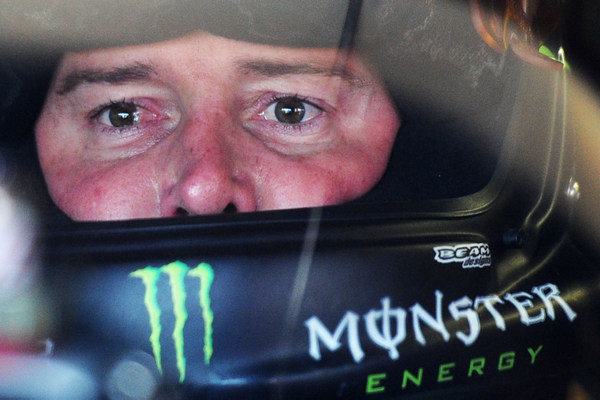
Kurt Busch is back on the track....with orders to be nice. So he's not talking to the media. (Photo: Getty Images for NASCAR)
So the best solution is for teams to scuff tires?
"It's your option," Labbe said.
"We don't which way we're going to go; but our tire guy has 15 sets ready....and that's a chore.
"And we've all got to get ready to race, because this is the last practice we'll get."
NASCAR has previously announced this as an 'impound' race, meaning no practice after Saturday quals.
There is no word yet from NASCAR about possibly allowing teams to do any testing late Saturday.
"So you're going to see everyone fire off and do a 10-lap run on stickers (in Friday practice) and see what they've got," Labbe said.
A late Saturday practice session? Labbe says he doesn't expect NASCAR to do that.
Most logically NASCAR would have a competition caution early in Sunday's race to let teams check tires. And NASCAR, using a tactic it last employed in 2008 at Indianapolis when tire problems developed there, could order repeated yellows during the race to allow teams to change tires.
And it would seem unlikely that Goodyear could solve the problem by letting teams running right-side tires all the way around.
"What we've got is what we've got," Labbe said.
"There were drivers Thursday who ran 10 laps on sticker (new) tires and blistered them...and the same teams put on scuffed tires and also blistered tires."
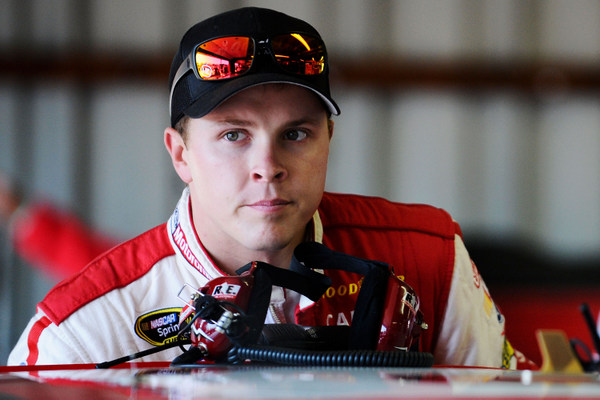
Trevor Bayne: what a week to return to the tour. 220 mph on the straights will put hair on your chest, that's for sure (Photo: Getty Images for NASCAR)
Dave Rogers, crew chief for Kyle Busch, one of the men who did the tire testing here in April, says "I think the speeds are just up so fast...
"We saw laps at 36.50 in the tire test (197 mph), and now they're running 36.20s (199), and consecutive 36.20s. So they're faster than they were in the test."
And the ambient temperatures here are a lot hotter than during the April test.
"We're about half a second quicker now than when we were testing...but the difference is when you test you do it for (only) a couple of laps. Here it's sustained speeds.
"We haven't had any blisters at all ourselves.
"But I have heard other people having problems after 15 or 20 laps (30 to 40 miles). But during the test we did several 20-lap runs for Goodyear and never saw a blister.
"We did a 20-lap run at the end of Thursday's test session and never saw a blister.
"Our right-side tire temps are up, but not outside of what Goodyear expected. It's the left-sides not wearing – so the heat stays inside the tire. The left-sides aren't sheding a lot of rubber, and shedding rubber is where you shed the heat."
How to do deal with it?
"NASCAR and Goodyear are letting us scuff our tires, and that will help some," Rogers says.
"And consider the race pace -- usually at Michigan the race pace really slows down once you get racing. So I expect speeds to fall half a second (a lap) to a second. And I think the problem will go away.
"I think we'll be fine."
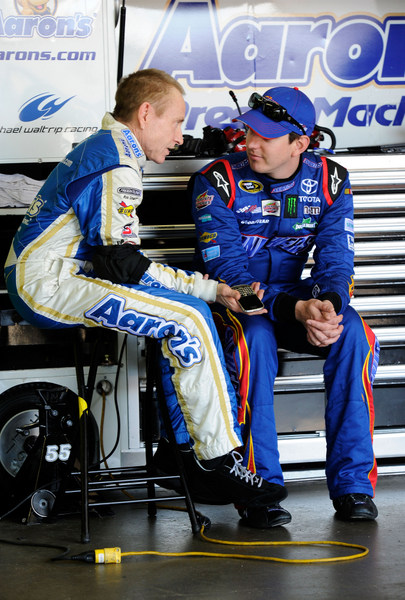
Mark Martin (L) and Kyle Busch: Martin's got one of the fastest cars here, but blistered tires have been an issue. Busch has blown engines the last two weeks (Photo: Getty Images for NASCAR)
Goodyear's Greg Stucker seems confident the situation will work itself out, and he points out it's not an unusual situation.
Indeed what makes the issue stand out is that Goodyear has been so spot-on with its NASCAR tires for nearly four years now, including last weekend's excellent work at repaved Pocono.
"It's what you typically battle with with a repave," Stucker says of the problems here.
"What happens is the track is very smooth, and the aggregate is not exposed, so the tire wear is minimal, and that's what you have to be concerned about."
On repaved tracks, tire wear is good, because a tire sheds heat as the rubber wears off.
"We saw some wear early in the Thursday session, but then the wear kind of stops....which means the tire isn't shedding heat.
"So that's what you try to 'compound' for.
"Some guys are having issues, some guys aren't.
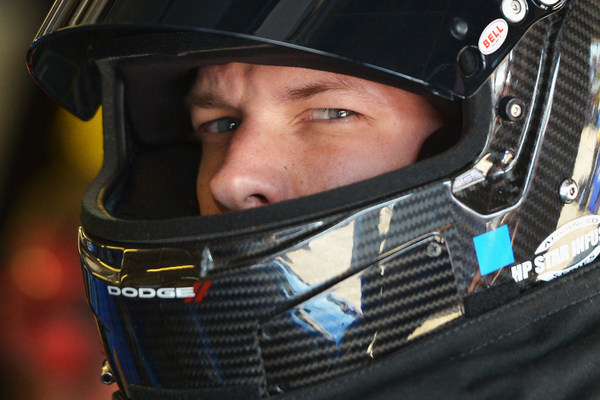
Brad Keselowski: He insists he's not a bit worried about these 220 mph straightaway speeds. Unfortunately he's one of the slowest guys in the field so far (Photo: Getty Images for NASCAR)
"It's something we're watching, with the teams, making sure their air pressures are in line and their suspension settings are good.
"Just tire management.
"It's just a safe thing to do to scuff tires on a repave, because you don't need fresh rubber for the grip."
Stucker said it appears that as teams run and lay rubber on the track, that's when the issue of no-wear begins to appear.
Would slowing the cars 10 mph or so help alleviate the issue?
"That would probably be directionally better," Stucker says.
"We don't know yet.
"We'll just have to watch it and see how it goes. Teams are clearly adjusting from what they've seen."
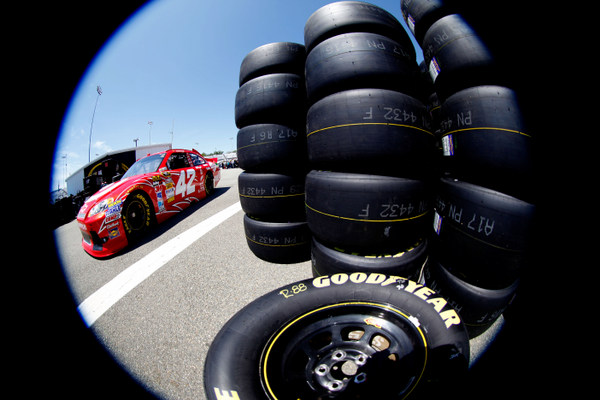
Harvick says tires at the moment are "really our only concern.
"It’s really not about the speed of the car anymore or how it handles. It’s really about making the tires survive. That is our biggest goal."
The issue he says is "blisters, mainly on the left-side tires -- more on the left-front than the left-rear... and along with the right-rear.
"That is our biggest concern right now – we've seen several of those situations through the garage.
"It's either going to come down to the race track getting more rubber on it and the speeds slowing down or it’s just going to come down to you slowing down and managing the pace to keep the tires on the car.
"We didn't blister any tires last week, and it was a brand new repave.
"So it's just something that you just never know.... when you get to a new track how fast everybody is going to run.
"I think Thursday we ran a second faster than what they ran at the test. And it was 40 or 50 degrees up here then; it's going to be 90 this weekend. You are looking at a 40-degree swing."
Harvick too was hopeful the situation would work itself out Sunday.
"A lot of times you see these problems, and you get in the race and the pace slows down like it did last week.
"We ran a second slower (at Pocono) than I really thought we would run, and probably a second and a half slower than what we ran in race trim in practice.
"That takes care of a lot of the problems.
"Now teams have on their minds that we need to take care of the tires.
"You will know where you are by the time practice is over today."
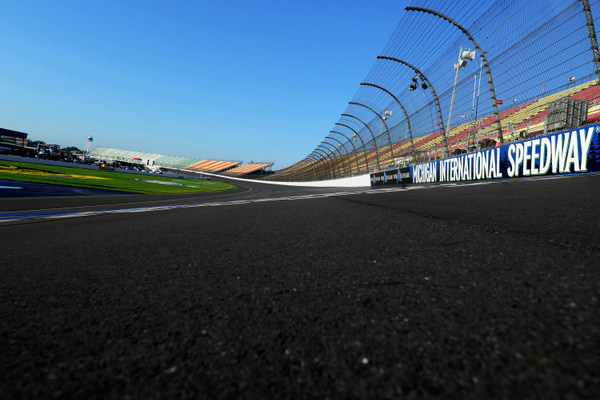
Michigan's new asphalt looks great, and it's fast, very fast. But maybe too fast for the tires (Photo: Getty Images for NASCAR)
© 2010-2011 www.mikemulhern.net All rights reserved.
Web site by www.webdesigncarolinas.com







Post new comment